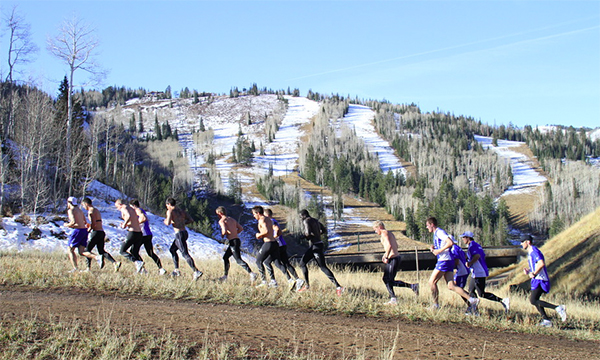Employed by elite athletes and professional sporting teams for over 40 years, altitude training offers its users a degree of success – which is all it might take. Professor Chris McLellan PhD looks at the history behind altitude training.
Adaptation to high altitude was first acknowledged by balloonists and alpinists in the early 1800’s who discovered the physical limits of going above 13,000ft (3,960m), the so-called “death zone”.
It wasn’t until small animals were taken along for the aeronauts to examine in flight that they realised the key to survival at high altitudes was in fact oxygen, the “active” gas component of air.
The first high altitude simulator for human testing was built at The Sorbonne in Paris in 1877. The machine was a giant, double-cylinder vacuum chamber large enough for a man to fit in it. Scientists were able to create a vacuum equal to 20,000ft (6,100m) of altitude. The man inside the chamber was able to survive by bringing along a rubber bag containing pure oxygen that he could breathe from.

Sir Edmund Hillary used native Sherpa living at 15,000ft (4,570m) as guides to help him reach the summit of Mt Everest. The familiar dark red cheeks of a Sherpa is caused by an increase in capillary blood vessels to their skin and an increase in myoglobin, the red pigment of muscles responsible for storing oxygen in the muscle cells. As myoglobin increases it leads to a dark red colour in muscles enhancing oxygen storage capacity.

High myoglobin is why whales can hold their breath underwater for hours at a time and how some birds can fly for days at 30,000ft without stopping. High myoglobin and high capillaries help circulate and retain oxygen in the muscle.
At sea level, air is denser and there are more molecules of gas per litre of air.
Regardless of altitude, air is composed of 20.9% oxygen and 79% nitrogen. As the altitude increases, the pressure exerted by these gases decreases, therefore there are fewer molecules per unit volume: this causes a decrease in partial pressures of gases in the body, which elicits a variety of physiological changes in the body that occur at whilst high altitude.
Athletes or individuals who wish to gain a competitive edge for endurance events can take advantage of exercising at high altitude, which is typically defined as any elevation above 5,000ft (1500 m).
One suggestion for optimising adaptations and maintaining performance is the live-high, train-low principle.
This training idea involves living at higher altitudes in order to experience the physiological adaptations that occur, such as increased red blood cell levels and higher VO2 max, while maintaining the same exercise intensity during training at sea level.

At high altitudes, there is a decrease in oxygen hemoglobin saturation. This hypoxic condition stimulates the production of erythropoietin (EPO), a hormone secreted by the kidneys. EPO stimulates red blood cell production from bone marrow in order to increase hemoglobin saturation and oxygen delivery. While EPO occurs naturally in the body, it is also made synthetically to help treat patients suffering from kidney failure and to treat patients during chemotherapy.

The study of altitude training was heavily delved into during and after the 1968 Mexico Olympics at an elevation of 7,349ft (2240m). During these Olympic Games, ‘endurance’ events saw significant below-record finishes while anaerobic sprint events, broke all types of records. The conclusions drawn, were equivalent to those hypothesized: that endurance events would suffer and that short events would not see significant negative changes. This was attributed not only to less resistance during movement — due to the less dense air, but also to the anaerobic nature of the sprint events.
Ultimately, these games inspired investigations into altitude training from which unique training principles were developed with the aim of avoiding underperformance.
Altitude training continues to be a hot topic amongst the research community as they continue to identify ways in which training at altitude can improve professional sports and athletic performance.
Thinking about altitude training for your gym or studio? Talk to the guys who can make it happen and get in before your competition does – click here.
Simulated Altitude Training (SAT) Instructor courses are available through Fitness Science Australia. This foundations course includes an overview of the history of SAT, terminology, physiological adaptations to SAT in response to a variety of training conditions, client screening and assessment, SAT progression, integration and periodisation and workout structure and session planning.
